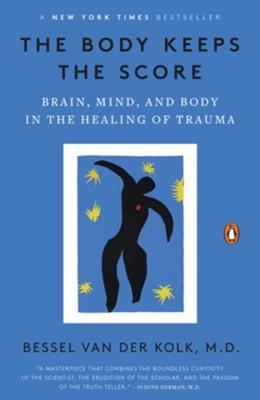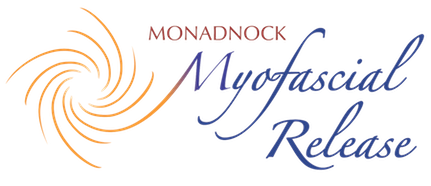I attended a weekend workshop with Bessel van der Kolk and Licia Sky over the past weekend at Kripalu in Lenox, MA. And, WOW!
 It had been on my wish list since I read Bessel’s book The Body Keeps the Score six years ago, and since I learned that he partnered with Licia in life as well as in work. I met Licia almost 16 years ago at an event just outside of Boston, where we immediately connected as like minded bodyworkers.
It had been on my wish list since I read Bessel’s book The Body Keeps the Score six years ago, and since I learned that he partnered with Licia in life as well as in work. I met Licia almost 16 years ago at an event just outside of Boston, where we immediately connected as like minded bodyworkers.
The Body Keeps the Score is a groundbreaking book about how trauma is best healed through bottom up approaches. Meaning working with the body where the impact of trauma is stored vs. the rational mind using psychotherapy which had been the prevailing model for decades.
Bessel says, "Trauma has nothing whatsoever to do with cognition...It has to do with your body being reset to interpret the world as a dangerous place....It's not something you can talk yourself out of."
Trauma Stored in the Body: A Closer Look
The effects of trauma on our bodies, our sense of self, our relationships and our lives can be devastating. Bessel explains eloquently how the effects of trauma are defined not only by the singular traumatic event, but also and even more so by how the event is dealt with afterwards.
It also greatly matters how resilient the person was at the time of the trauma. If a person who was raised in a loving home with a  sense of agency and self worth experiences a traumatic event, and after the event are met with the same love and understanding, the chances of the trauma causing long term effects goes way down to even 0 in many cases.
sense of agency and self worth experiences a traumatic event, and after the event are met with the same love and understanding, the chances of the trauma causing long term effects goes way down to even 0 in many cases.
However, if someone who has already been traumatized, especially in childhood, experiences the same traumatic event, and afterward, they are met with neglect and blaming, the chances that they will have long term effects is much closer to 100%.
This is not to say there aren’t outliers. There are traumas that are big enough to cause even the most resilient person to suffer longer.
At MMFR we specialize in using a bottom up approach with our clients. Our focus is on the body. Specifically, the fascial system, which is where trauma gets stored. The information that Bessel shared with us was very familiar to me and validating to the work I’ve been doing for the past 30 years.
Harnessing the Healing Power of Channel Tuning
Over the weekend, Bessel took on the role of lecturing. He is a researcher first; he has used the scientific approach to of researching to prove his theories. He shared slides filled with technical terms, numbers data and graphs. While Licia worked with us through her movement, and sound exercises using this bottom up approach Bessel has proven is so effective.
My mentor John Barnes, the founder of myofascial release, would say Bessel was using channel 5, or the left side of his brain, and Licia was using channel 3, or the right side of the brain.
John calls channel 3 the “healing channel”, and is accessed only through the body. I took in a lot of information from channel 5 last weekend that helps me make sense of what occurs when we are in channel 3. That’s how the two channels work best together.
In a myofascial release treatment session we work with our clients to help them change the channel. We guide them to tune into channel 3 where not only bodily sensations, but also emotions, and sometimes memories or belief systems are stored. Accessing this information is critical for healing our pain and dysfunction permanently. We incorporate mindfulness into our hands on and movement work as well as using sound when needed, to get our clients tuning into the healing channel number 3.
Triumph Over Trauma
I’ll share a recent success story with you. A client I’ve worked with for eight weeks, I’ll call her Rose, came in for her treatment last week very excited about something. She shared with me that she was finally able to go to a yoga class, and stay in savasana not only without panicking and tightening up her body, but she actually felt at ease for the first time in ten years.
A traumatized person gets triggered by sensory experiences that remind their body of the trauma. For Rose it was the position of savasana. Until she took a yoga class, she successfully avoided this position so she was unaware of how it affected her.
Yoga is a bottom up approach, and is recommended by Bessel for treating trauma. In a yoga class students are guided through postures or poses, and these postures can be adjusted if needed to suit a person's specific body needs. Savasana is typically the last pose in the yoga class and is meant for deep relaxation and integration of the work already done. But, for Rose it was the opposite of relaxing as it instead triggered a panic response.
Being able to work with the trauma stored in her body using myofascial release and other modalities, she was no longer controlled by this past experience.
Empowering Liberation from Trauma
If you are suffering from trauma, if you notice that there are experiences you have or situations you are in or people you are with that trigger in you a sense of slight or big panic; there are ways to resolve it. The treatment program we offer at MMFR is one of the most effective ways that I’ve found to do so with clients. We’re here to help you.
